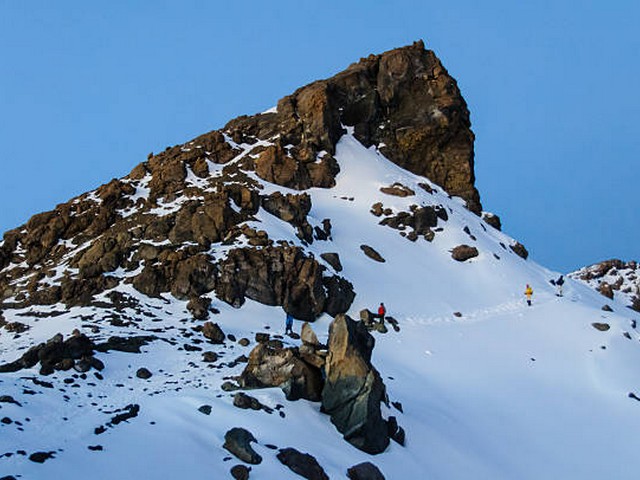How To Train For Kilimanjaro Trek: Your Ultimate Guide
Ascending the majestic slopes of Mount Kilimanjaro is a dream many hold dear, nestled deep in the heart of Tanzania. As the highest peak in Africa, Kilimanjaro’s breathtaking vistas and diverse ecosystems present not only a personal challenge but also a transformative journey. Preparing for this adventure is key, and at Kilimanjaro Centre for Trekking and Ecotourism (KCTE), we are here to guide you step by step on how to train for the Kilimanjaro trek. This preparation will not only enhance your experience but also maximize your chances of a successful summit.
Why Training for Kilimanjaro is Essential
Kilimanjaro is not just a physical challenge; it’s a battle of endurance, will, and perseverance. At 5,895 meters (19,341 feet), the summit, Uhuru Peak, invites you to conquer its heights, but the journey demands respect. Training for Kilimanjaro increases your physical stamina and mental preparedness, making acclimatization easier and the trek more enjoyable.
Physical Training: Building Your Kilimanjaro Stamina
Cardiovascular Fitness
The heart of your Kilimanjaro training should be cardiovascular conditioning. Start with activities such as running, cycling, or swimming to increase your aerobic capacity. Aim for at least 30 minutes of cardio, three to four times a week. As your fitness improves, incorporate longer sessions that mimic the prolonged duration of a day’s trek on the mountain.
Strength Training
Kilimanjaro’s uneven terrain and the necessity of carrying a day pack call for good physical strength. Focus on building the strength of your legs, core, and back. Exercises like squats, lunges, planks, and deadlifts will fortify your muscles. Include two strength training sessions each week to support your endurance training.
Hiking Practice
There’s no better preparation than simulating the actual activity you’re training for. Spend weekends hiking, preferably on varied, uneven terrain. Gradually increase the distance and elevation gain of your hikes to mimic those you will experience on Kilimanjaro. Practice using the boots and day pack you’ll wear on your climb, this will help condition your body and identify any issues with your gear before the actual trek.
Mental Preparation: The Psychological Ascent
Visualization
Imagine standing atop Uhuru Peak, with Africa stretching boundlessly below. Visualization is a powerful tool for mental preparation. Regularly take time to picture yourself successfully progressing through each day’s trek and overcoming challenges.
Stress Management Techniques
Learn and practice stress management techniques such as mindfulness or deep breathing exercises. These methods can be invaluable on the mountain when you need to maintain mental clarity and calm.
Set Realistic Goals
Set achievable milestones for both your training and your trek. This not only structures your preparation but also keeps motivation high and builds confidence.
Nutrition and Hydration: Fueling the Climb
Balanced Diet
Adopt a nutritious diet rich in carbohydrates, proteins, and healthy fats. Carbohydrates are crucial for sustained energy, which is vital during long trekking days. Proteins will aid muscle repair and recovery, while fats are important for long-term endurance.
Hydration
Learn to manage your hydration effectively. Begin hydrating weeks before your climb and understand your body’s signals for dehydration. On your practice hikes, experiment with different methods of carrying and accessing water.
Acclimatization: Understanding Altitude
Kilimanjaro’s high elevation means thinner air and less oxygen. To combat altitude sickness, incorporate high-altitude hikes into your training if possible. Understanding how your body reacts to higher elevations is invaluable preparation for the trek.
Gear and Equipment: Dressing for Success
Invest in high-quality trekking gear. Essentials include:
- A sturdy pair of hiking boots
- Moisture-wicking clothing
- A warm, insulated jacket
- A reliable backpack
- Necessary camping gear for multi-day hikes
Test all gear during your training hikes to ensure comfort and durability.
FAQs About Training for Kilimanjaro Trek
How long should I train before attempting to climb Kilimanjaro?
Ideally, start training at least 6 months before your trek. This provides ample time to build up physical endurance and mental resilience.
Are there specific exercises that help with altitude adaptation?
While no exercises can simulate altitude, cardiovascular workouts improve your aerobic capacity, making it easier to adapt to lower oxygen levels.
Can beginners successfully climb Kilimanjaro?
Absolutely! With adequate preparation and a determined mindset, beginners can successfully summit Kilimanjaro. Choosing a reputable tour operator like Kilimanjaro Centre for Trekking and Ecotourism (KCTE) can enhance your chances of success.
What is the best time of year to climb Kilimanjaro?
The best times to climb Kilimanjaro are during the dry seasons, from late June to October and from late December to mid-March.
Ready to Conquer Kilimanjaro?
Embark on this life-changing journey with Kilimanjaro Centre for Trekking and Ecotourism (KCTE). Our expert guides, comprehensive training support, and impeccable safety record ensure a memorable and successful climb. Preparing thoroughly for Kilimanjaro not only prepares you for the physical trek but also ensures that the memories of the summit sunrise will last a lifetime. Visit our website to book your adventure and start your training journey today. Climb with us and stand atop Africa!




